As adults, many of us understand that gratitude is an important element of our mental and emotional well-being. Practicing gratitude and appreciation in our lives makes us happier as people. It reminds us to keep our eyes open to the wonders of the world and it helps us to be more resilient individuals. Expressing words of gratitude can improve our relationships with friends, family members, peers, and ourselves.
And the benefits of gratitude can be seen just as clearly in the lives of children. A 2019 entry in the Journal of Happiness Studies found a positive correlation between gratitude and happiness in kids as young as five years old. Many studies in the last few decades have also shown that continuing to cultivate and experience gratitude through the school years improves both kids’ and teens’ ability to empathize with others, as well as their overall sense of satisfaction.
People aren’t really born with a sense of gratitude, however. It’s something that is taught, through actions, through attention, and through words. There are several things that adults can do to encourage a thankful outlook in children. Just by expressing our own appreciation, for nature, for our friends and family, and even for our children themselves, we are strengthening our children’s ability to feel and show gratitude.
Doing these fun and simple crafts to create adorable paper-chain animals with your child is another way to help them develop this important attitude (and some literacy skills while we’re at it!)
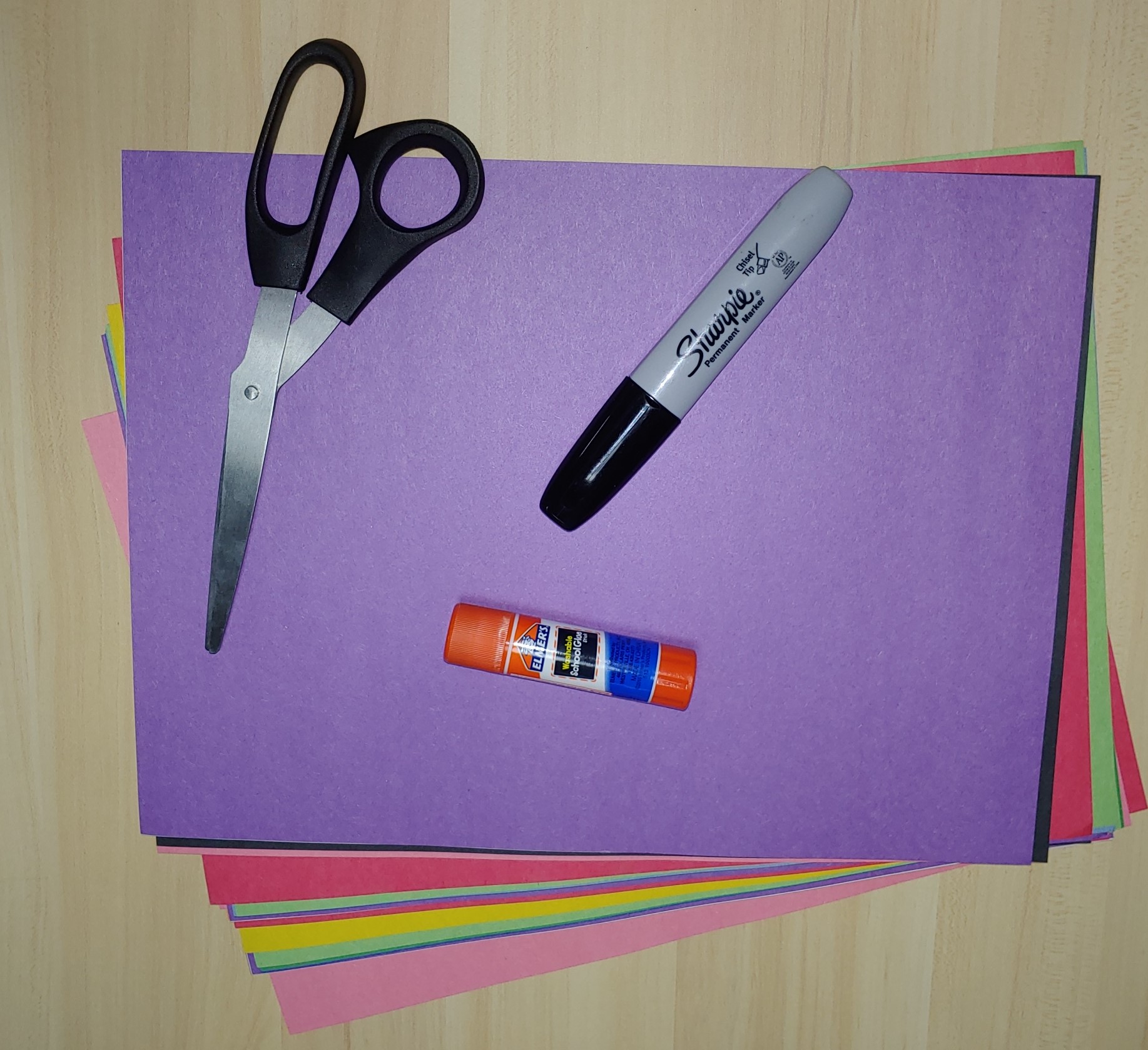
Materials:
- Construction Paper
- Glue
- Scissors
- Marker
Cost: $3-7 for construction paper and glue
Set the Scene (optional)
Kick off your crafting session by curling up with your child and a great book on the subject. Books like If Animals Gave Thanks by Ann Whitford Paul, Gracias/Thanks by Pat Mora, and We Are Grateful: Otsaliheliga by Traci Sorell will help your child better understand the concept of gratitude and thankfulness by presenting diverse lenses on the subject.
Then, while sitting and connecting the rings in these projects, you can further foster gratitude by discussing what you’re thankful for, as well as things that your child has done that made others appreciative. If you’re feeling ambitious, you can even help your child write down things they’re grateful for on the back of the strips of construction paper before rolling them into rings.
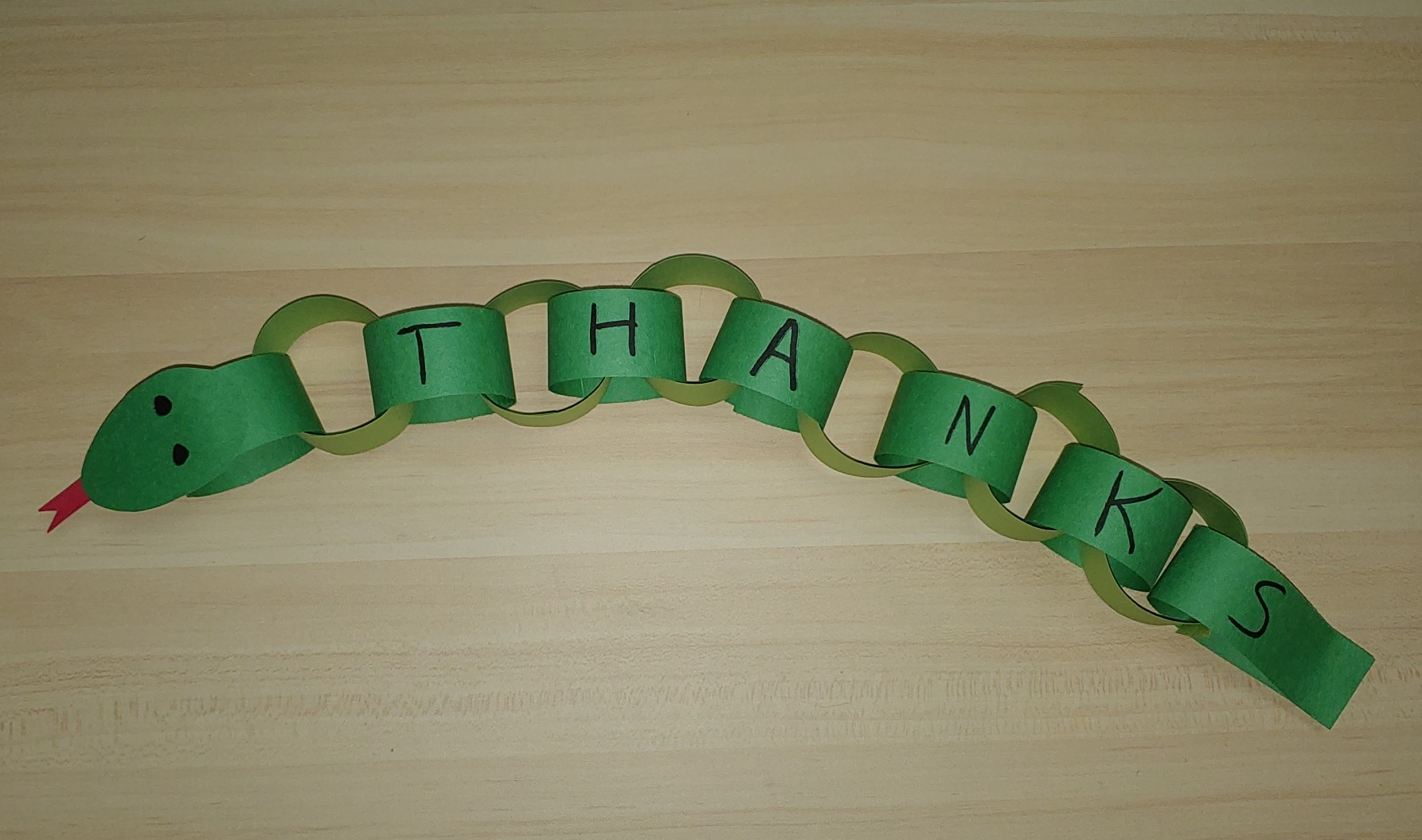
Gratitude Animal Project 1: Thanks Snake
This cute little guy is slithering over to show his appreciation. Once created, the Thanks Snake can either serve as a fun toy or decoration, or it can be used as a unique gift in place of a traditional thank-you card.
Step 1: Use two sheets of construction paper of a color (or colors) you choose. Cut each piece of construction paper into eight strips lengthwise, then cut the strips in half. This will create 16 strips of one-inch by five-inch paper for each sheet of paper. Cut out one oval shape for the head and a small red strip for a tongue.
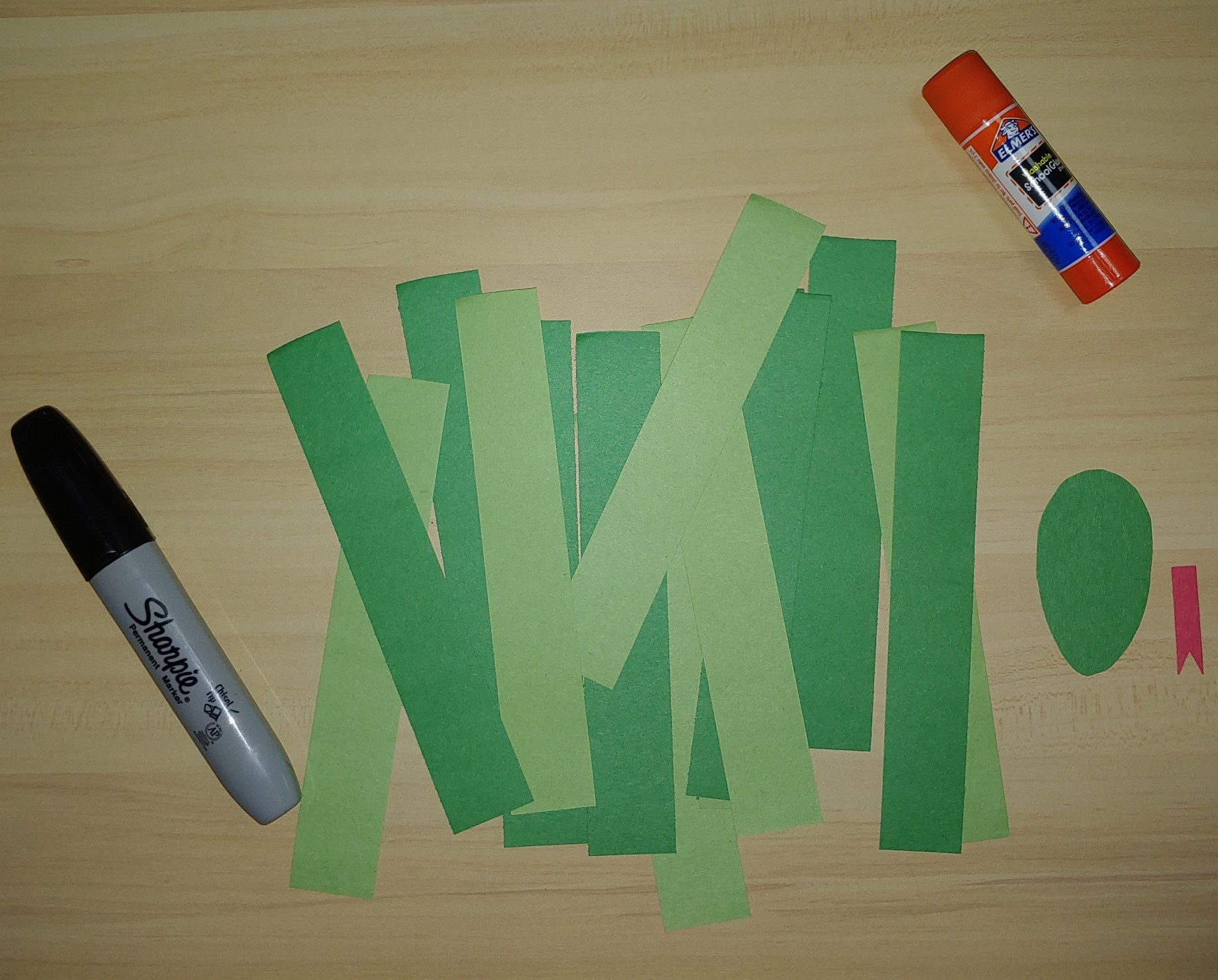
Step 2: Take six of the construction paper strips. Write one letter of the word thanks on each. Center the letters T, H, A, N, and K, but position the letter S slightly to the side.

Step 3: Set the strip with the letter S to the side. (You’ll add it in the next step.)
Glue or tape one end of a blank strip over the other to create a ring. Slide another blank strip of paper through the first ring, then glue or tape it together to form a second ring. Use the strip with the letter T on it for the third ring.
Next, alternate one blank strip and one lettered until you have 12 rings of paper strung together, spelling “THANK.”
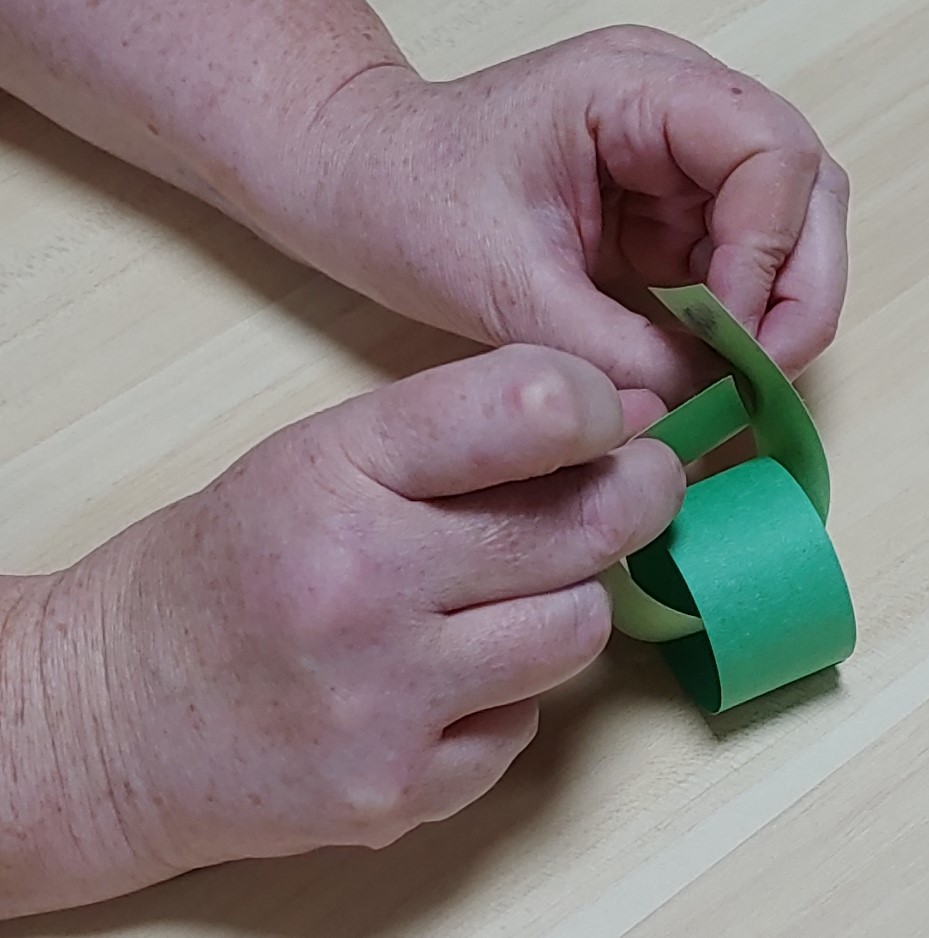
Step 4: Slide the S strip through the last ring. Glue the ends of the paper together to create a raindrop shape for the tail, as shown in the picture below. Make sure the S is on the top. Draw two eyes on the oval for eyes and glue the tongue on, then glue the head to the top of the first ring.

Gratitude Animal Project 2: Grateful Octopus
The Grateful Octopus makes a great wall decoration in your little one’s room or playroom. Use your favorite wall-safe adhesive or mounting putty both to hold it to the wall and to position the arms.
Step 1: You’ll need five pieces of paper for this animal. Use blue as shown, or your child’s favorite color! Again, cut each piece of construction paper into eight strips lengthwise, then cut the strips in half, creating 16 strips from each sheet. You will need 64 strips total. Cut a large dome shape for the head of the octopus, two white ovals for the eyes, and two smaller circles for pupils.
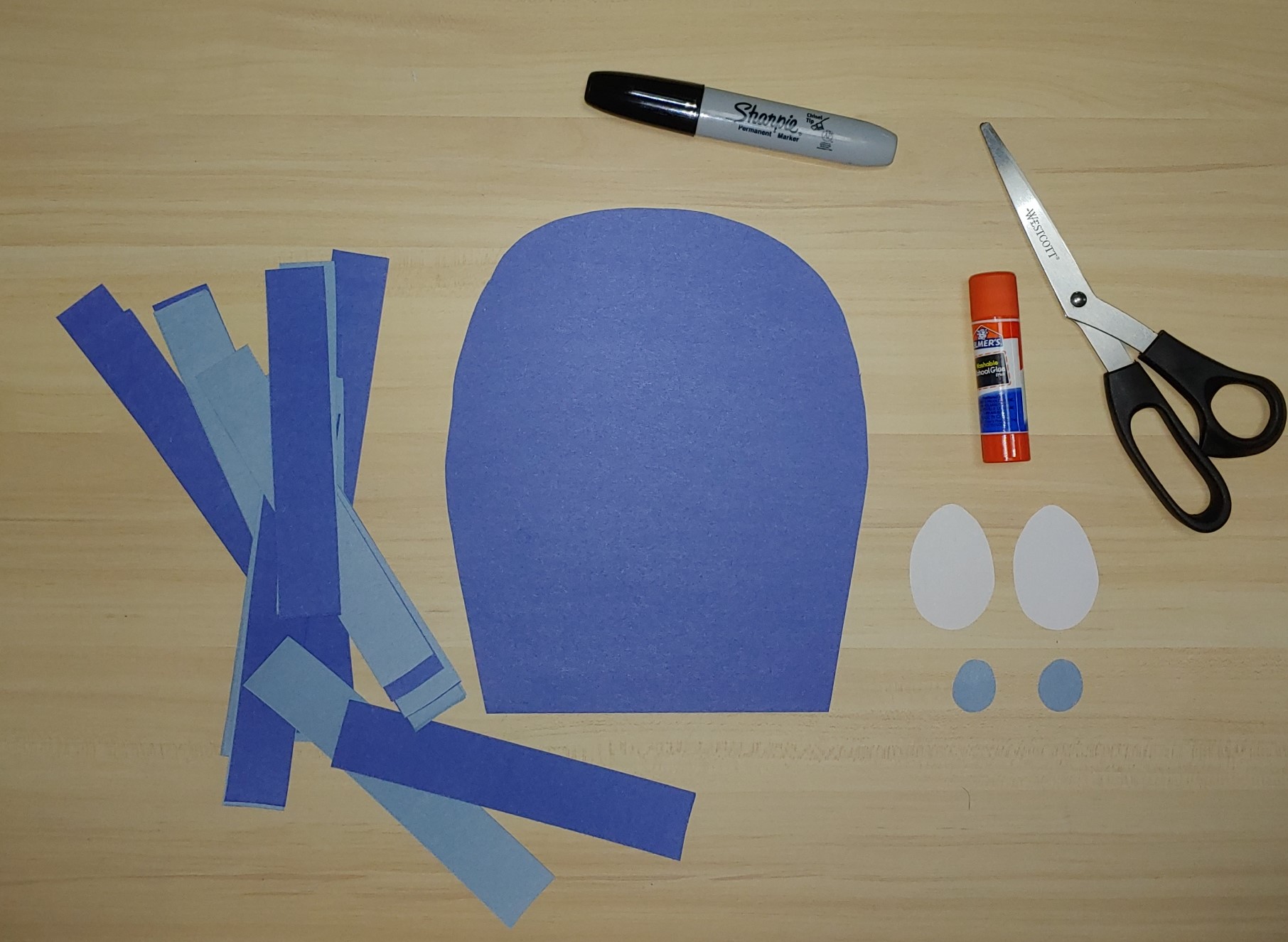
Step 2: Take eight of the construction paper strips and in the center of each one vertically write one letter of the word grateful. I chose to alternate colors, but that’s up to you.
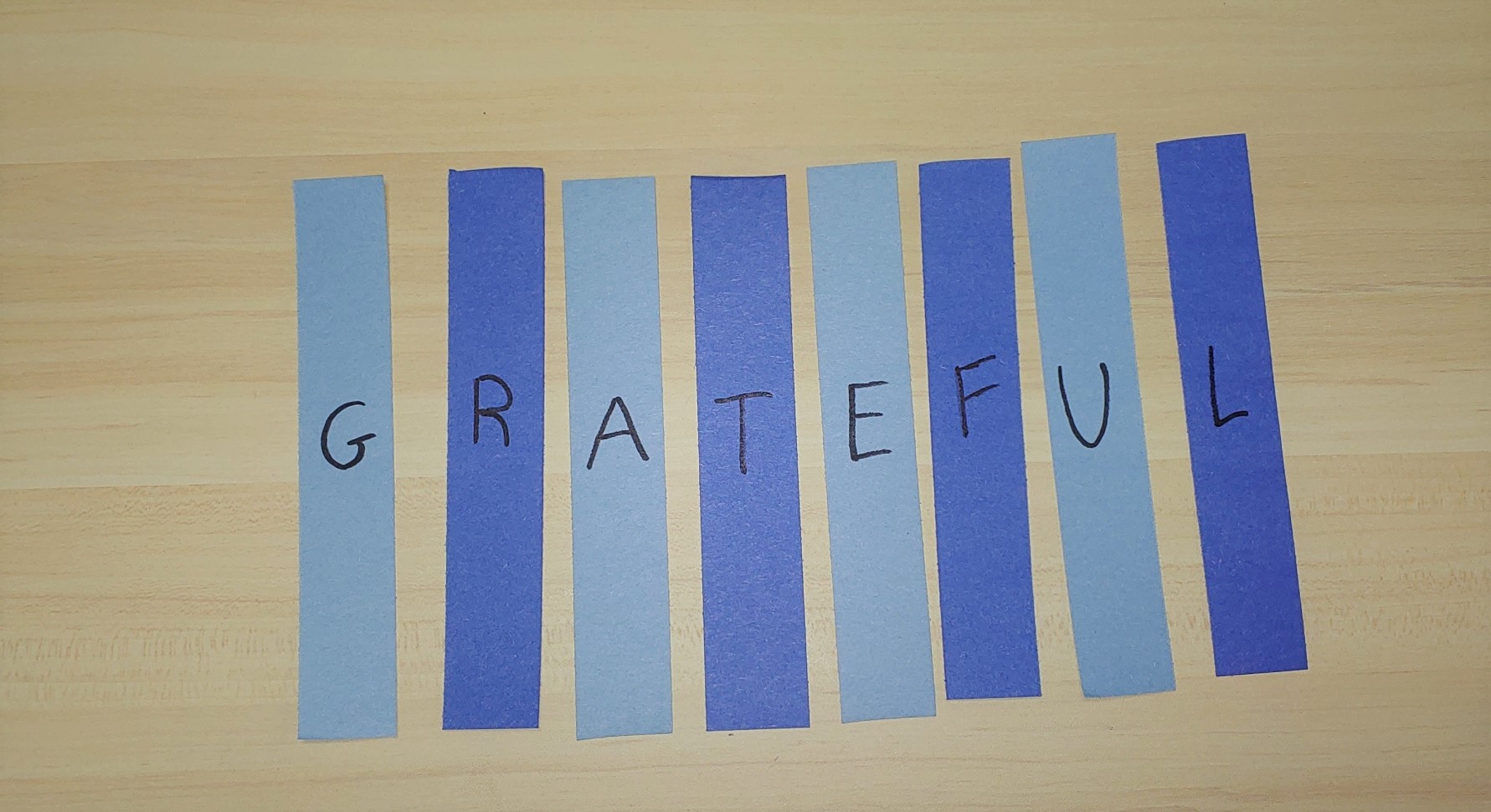
Step 3: Glue or tape one end of the first lettered strip over the other to create a ring. Slide a blank strip of paper through the first ring, then glue or tape it together to form a second ring. Continue until there are eight rings. Repeat this procedure for each letter.
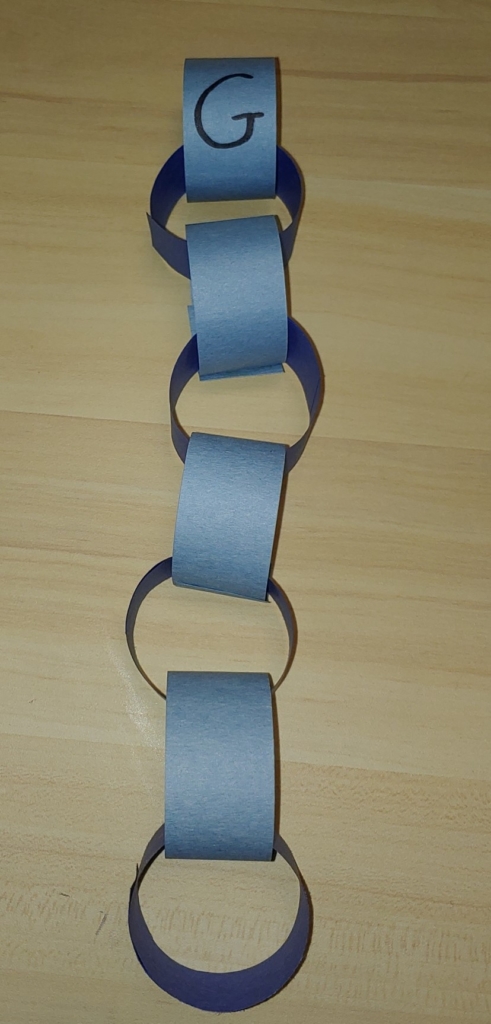
Step 4: Glue each paper chain to the bottom of the dome shape to spell out grateful. Glue on the white eyes, then the colored pupils.
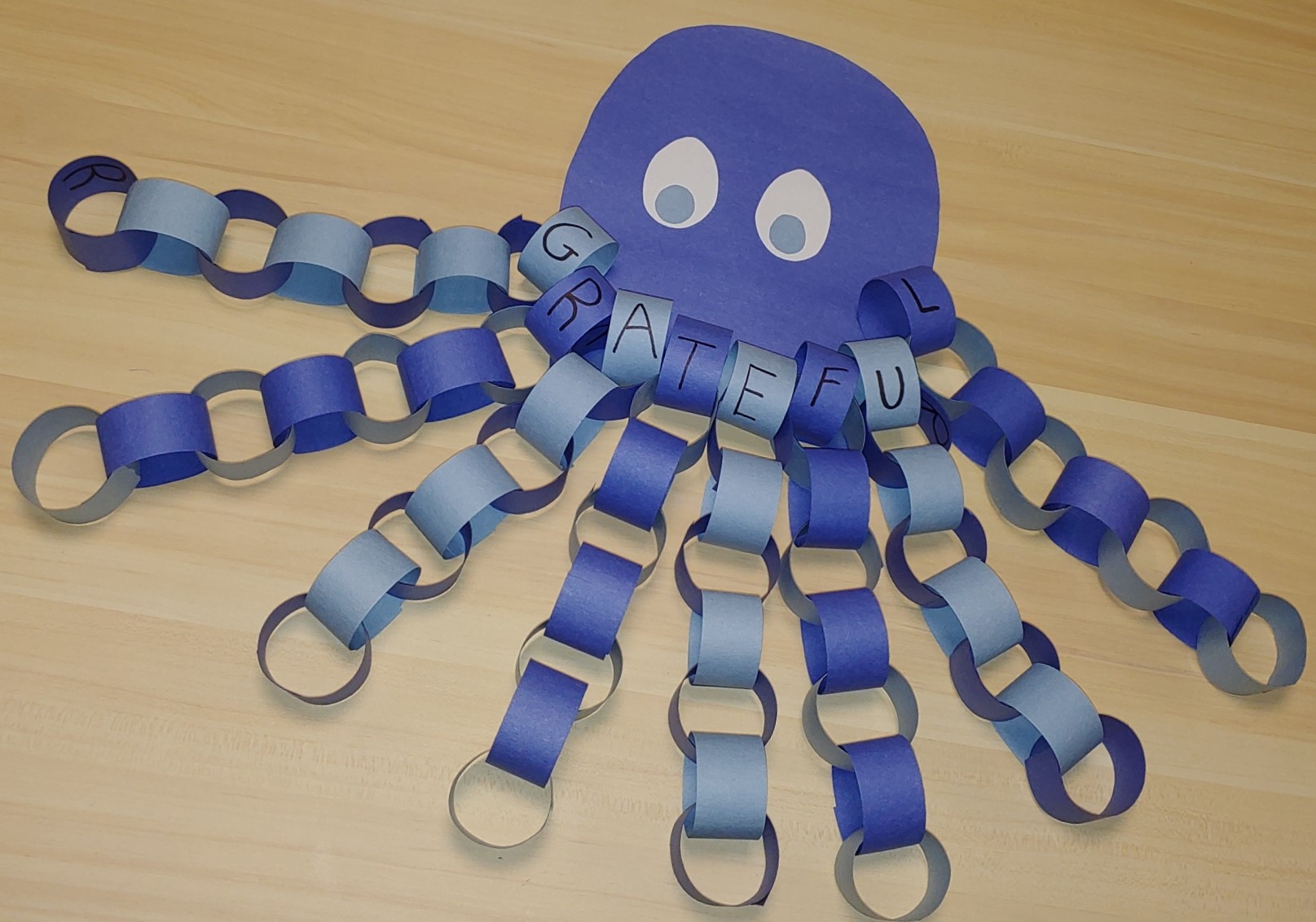
Gratitude Animal Project 3: Thanksgiving Turkey
Paper rings can also be used to make an ordinary Thanksgiving craft extraordinary.
Step 1: Create your favorite construction paper turkey, such as the one below.
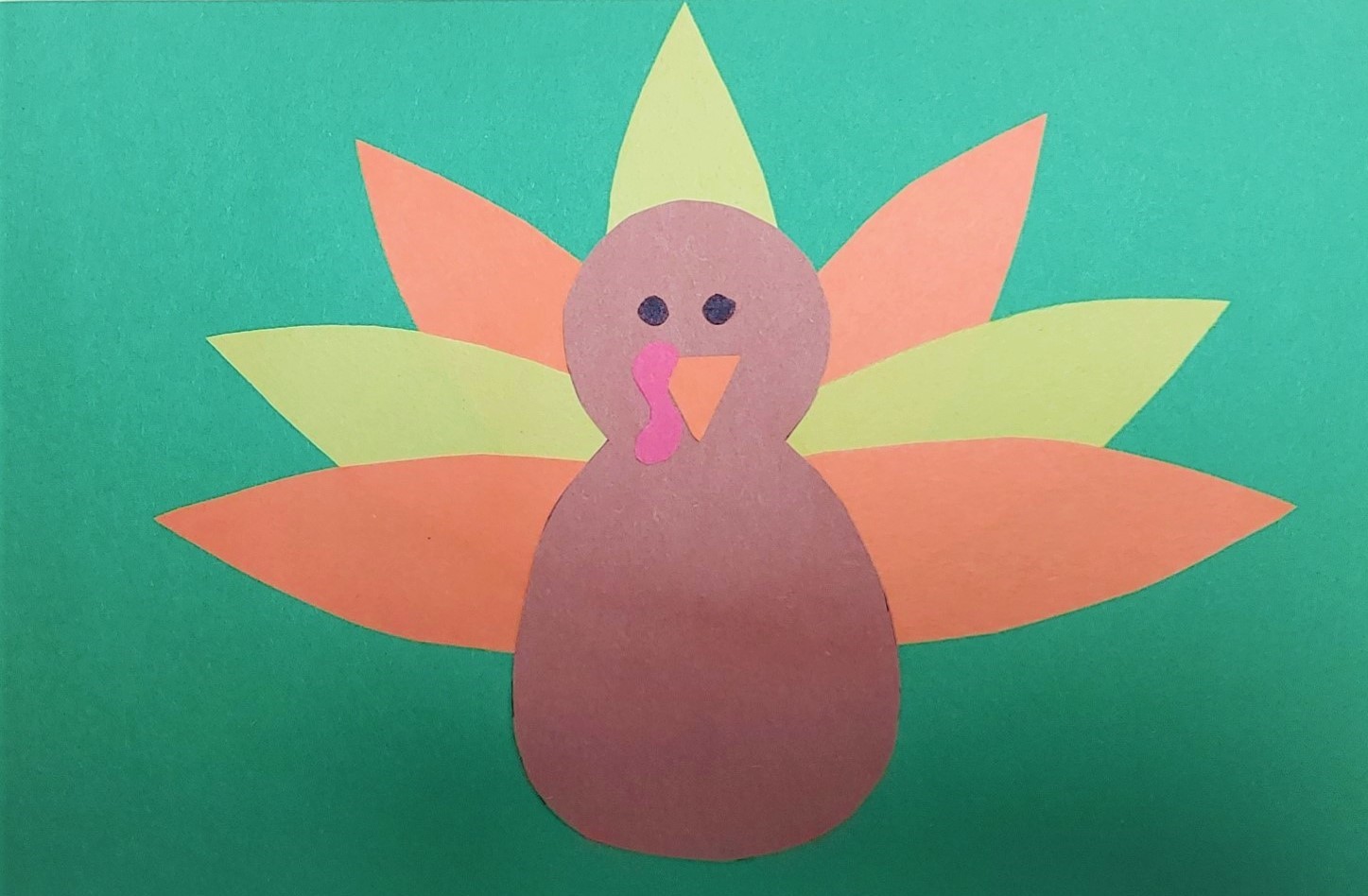
Step 2: Let each participant write something they are grateful for on one strip of construction paper.
Step 3: Glue the strips of paper into rings, then glue the paper rings to the feathers of the turkey with the words facing outwards. Younger children can draw a picture of something they’re grateful for.
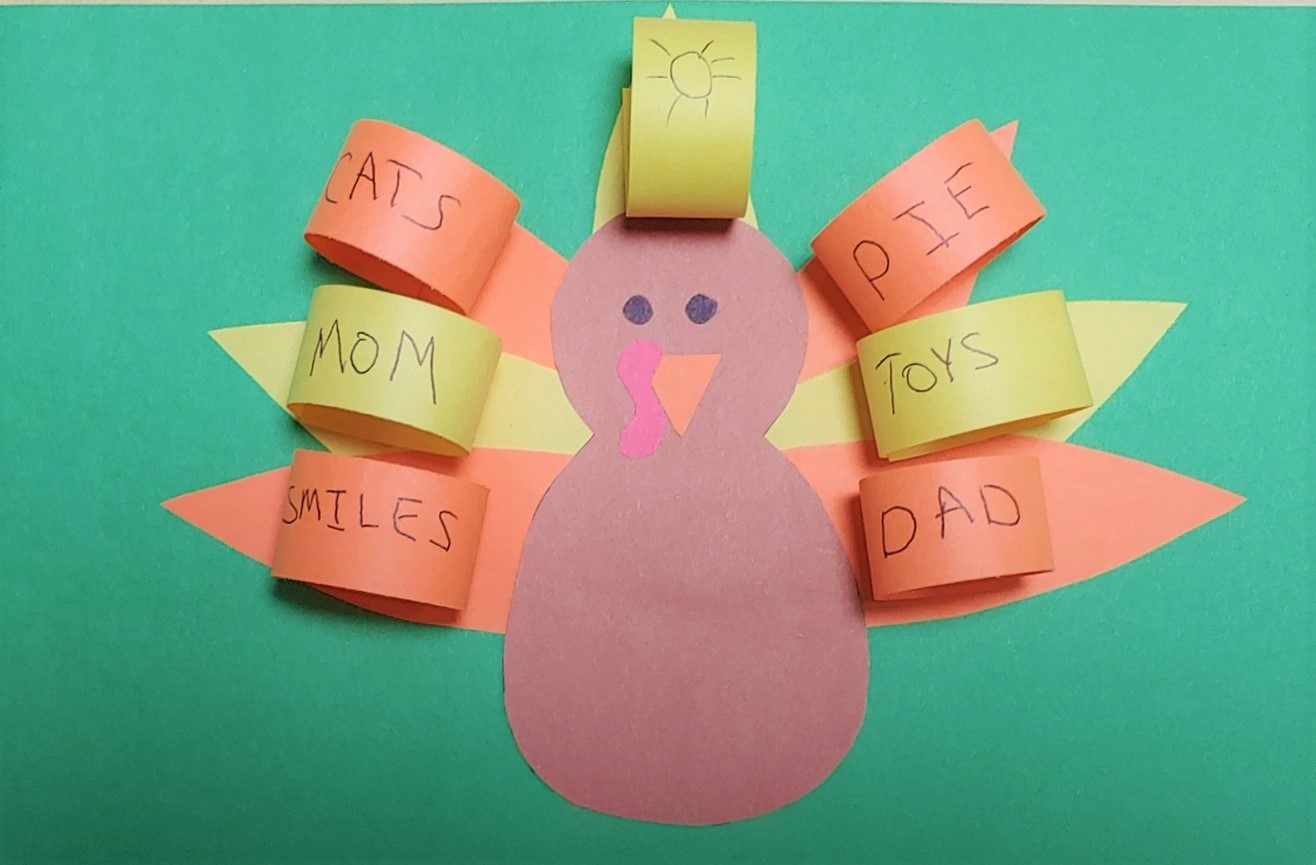
Gratitude promotes optimism, improves resilience, and makes children happier starting as young as five years old. Teens who frequently experience gratitude are more hopeful about their lives, more satisfied with their lives, and less likely to develop depression. Like reading, teaching children about thankfulness and appreciation are lessons that benefit kids for a lifetime.
Like this post? Share it!

